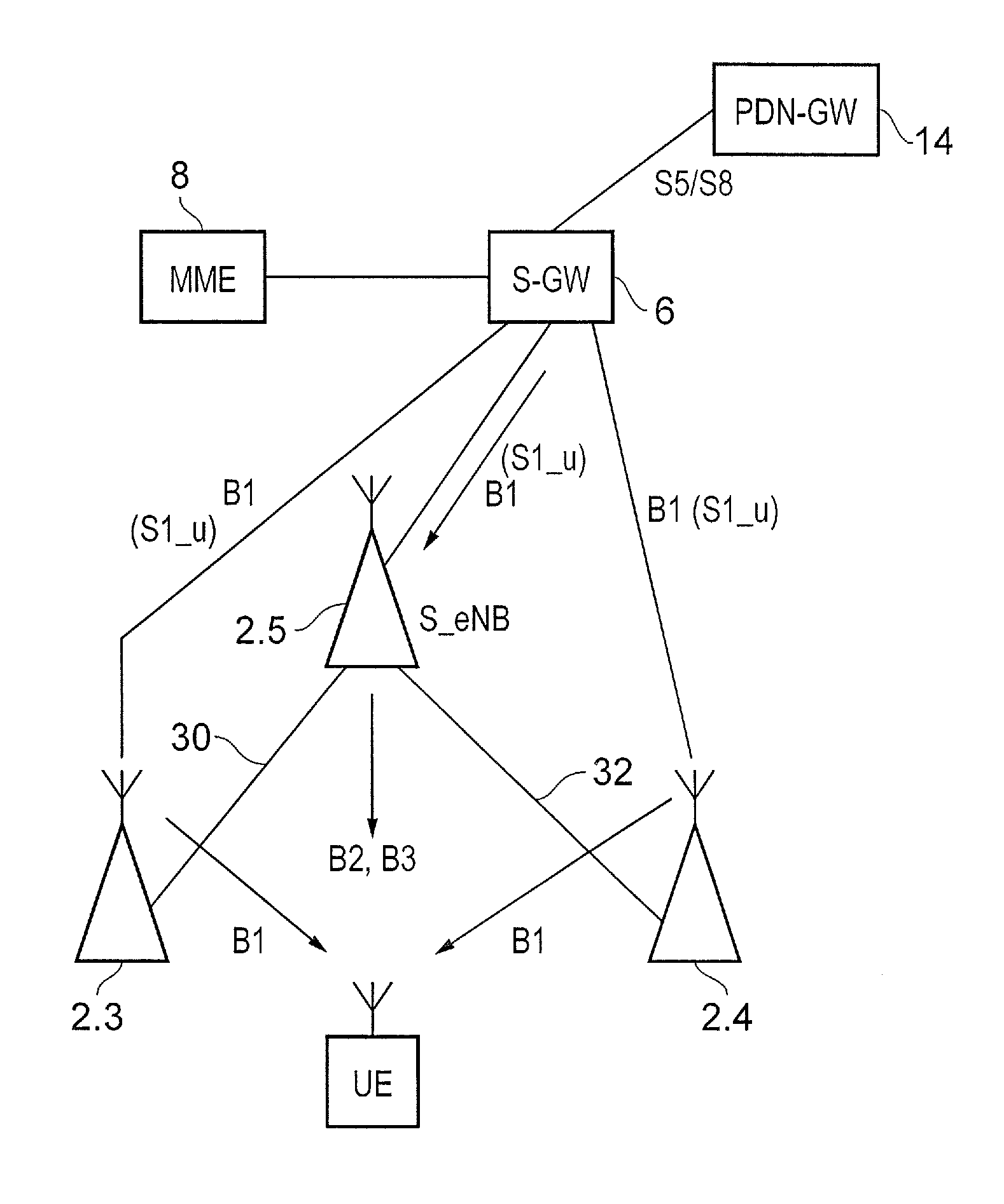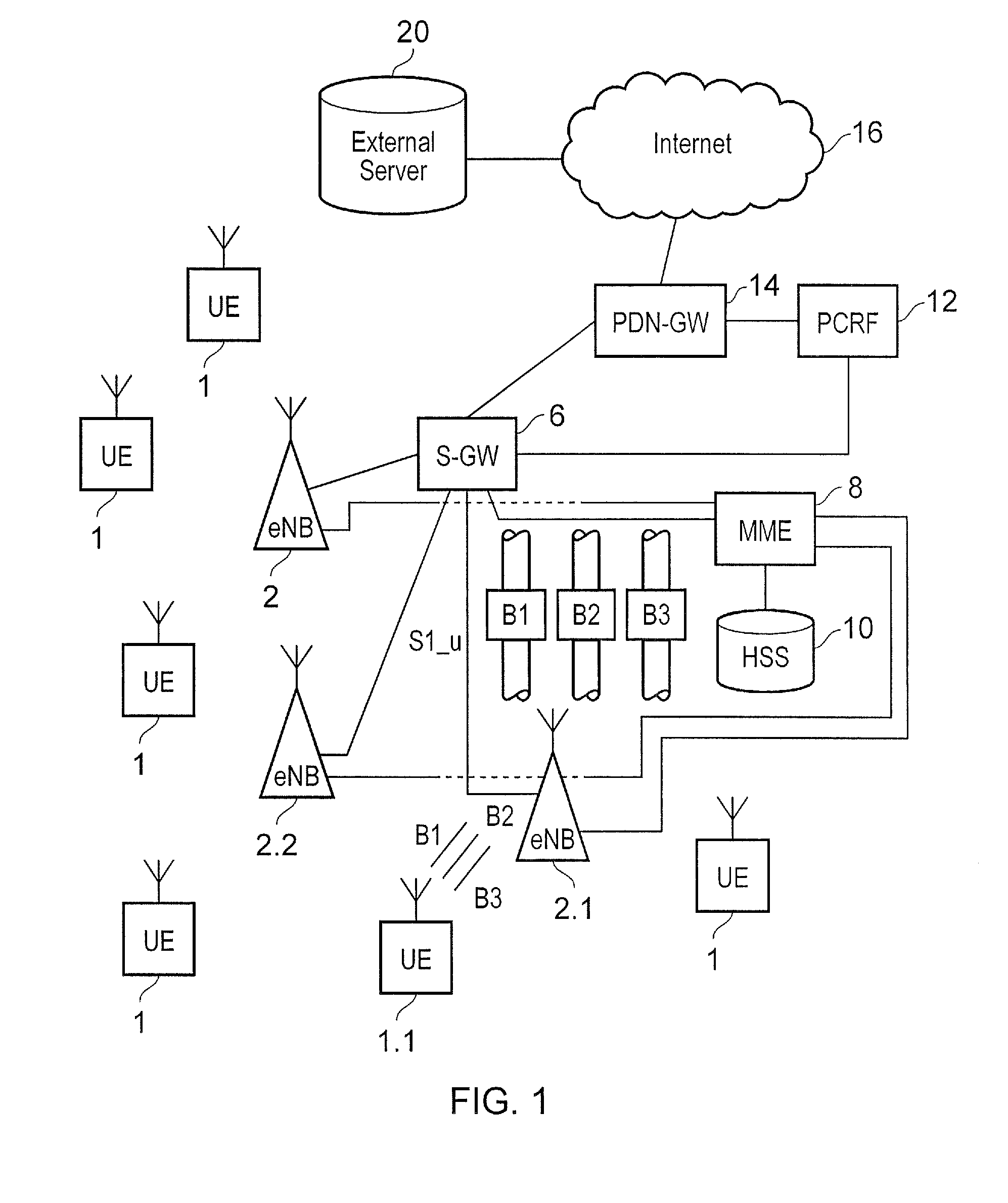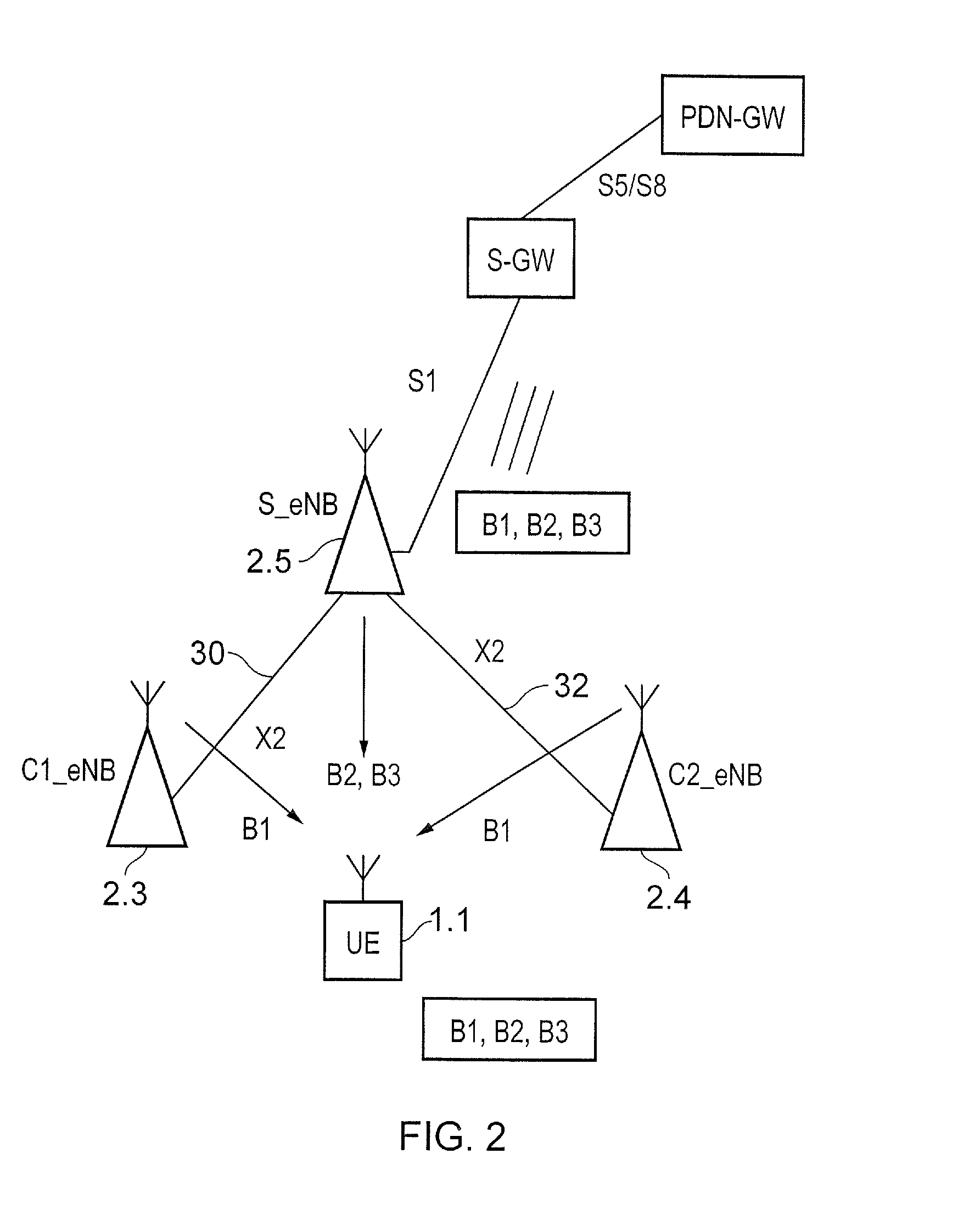Communications terminal and method
a terminal and communication technology, applied in the field of mobile communications networks, can solve problems such as interface congestion, and achieve the effects of reducing the bandwidth of reducing the burden on the interface, and reducing the congestion on the interface between the serving base station and the co-operating base station
- Summary
- Abstract
- Description
- Claims
- Application Information
AI Technical Summary
Benefits of technology
Problems solved by technology
Method used
Image
Examples
Embodiment Construction
[0021]Embodiments of the present invention will now be described with reference to an implementation which uses a mobile communications network operating in accordance with the 3GPP Long Term Evolution (LTE) standard. FIG. 1 provides the example architecture of an LTE network. As shown in FIG. 1 and as with a conventional mobile communications network, communications terminals (UE) 1 are arranged to communicate data to and from base stations 2 which are referred to in LTE as enhanced NodeBs (eNB). For transmitting and receiving data via the wireless access interface the communications terminals 1 each include a transmitter / receiver unit 3.
[0022]The base stations or eNB's 2 are connected to a serving gateway S-GW 6 which is arranged to perform routing and management of mobile communications services to the communications terminals 1 as they roam throughout the mobile radio network. In order to maintain mobility management and connectivity, a mobility management entity (MME) 8 manages...
PUM
 Login to View More
Login to View More Abstract
Description
Claims
Application Information
 Login to View More
Login to View More - R&D
- Intellectual Property
- Life Sciences
- Materials
- Tech Scout
- Unparalleled Data Quality
- Higher Quality Content
- 60% Fewer Hallucinations
Browse by: Latest US Patents, China's latest patents, Technical Efficacy Thesaurus, Application Domain, Technology Topic, Popular Technical Reports.
© 2025 PatSnap. All rights reserved.Legal|Privacy policy|Modern Slavery Act Transparency Statement|Sitemap|About US| Contact US: help@patsnap.com



